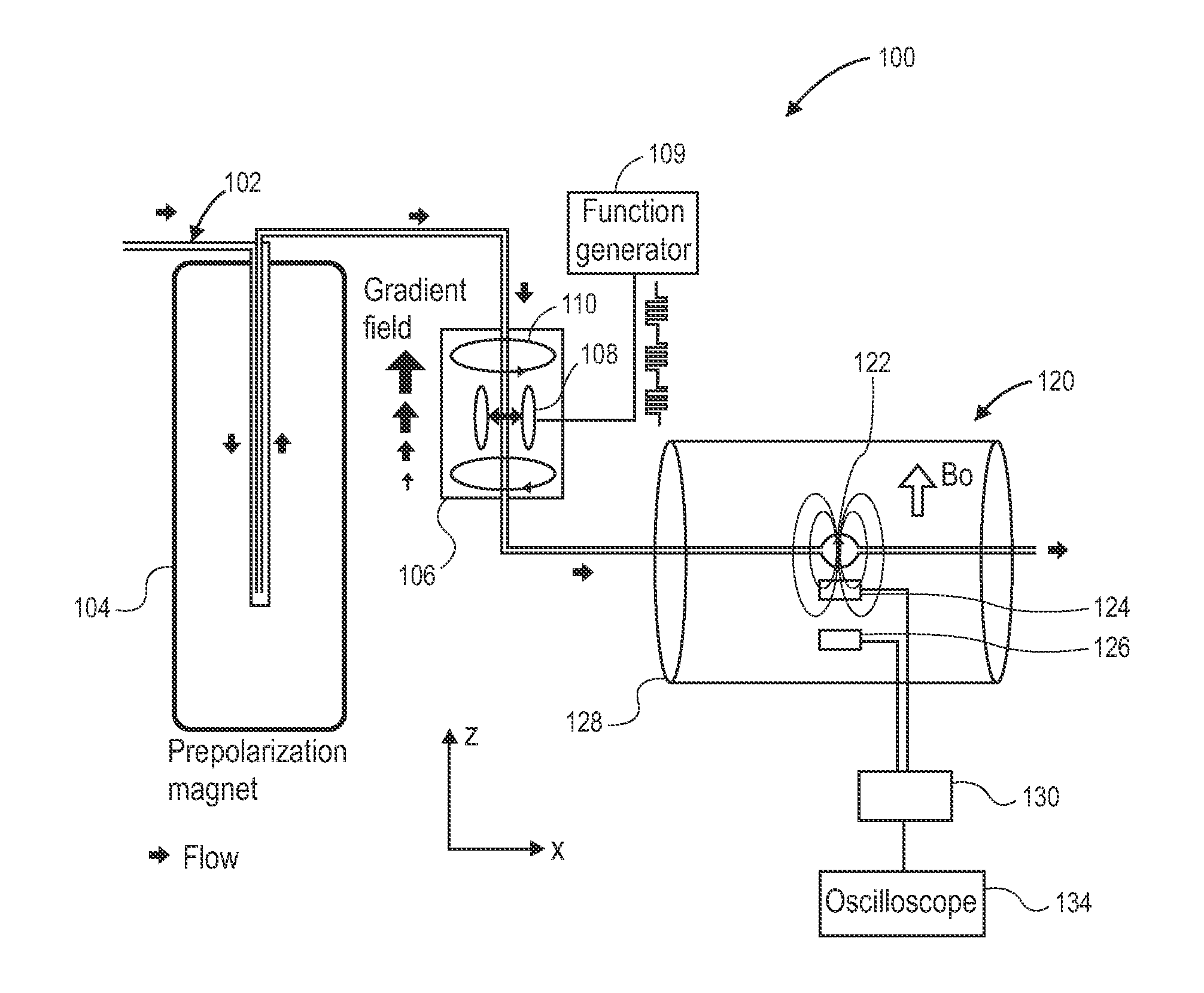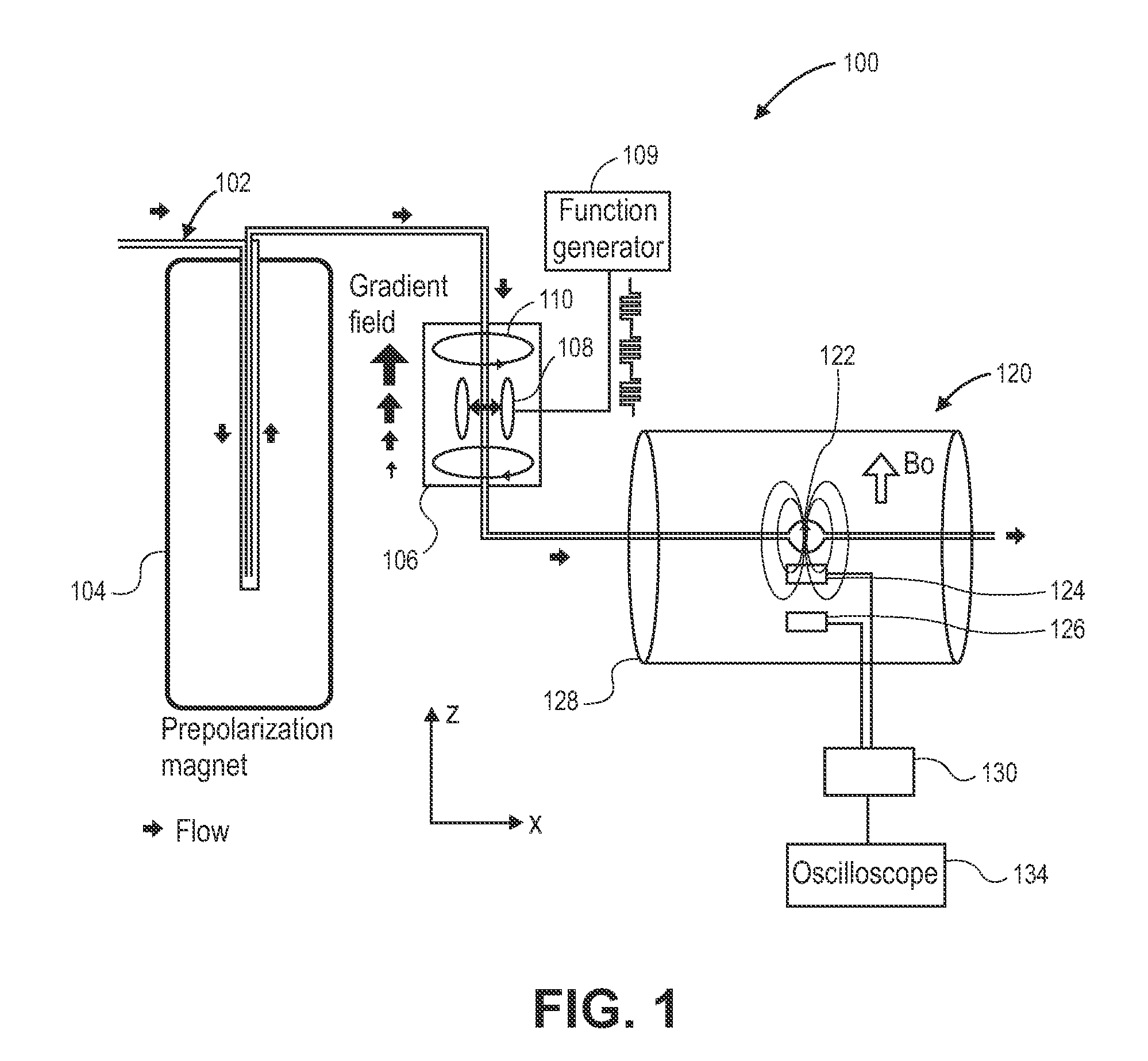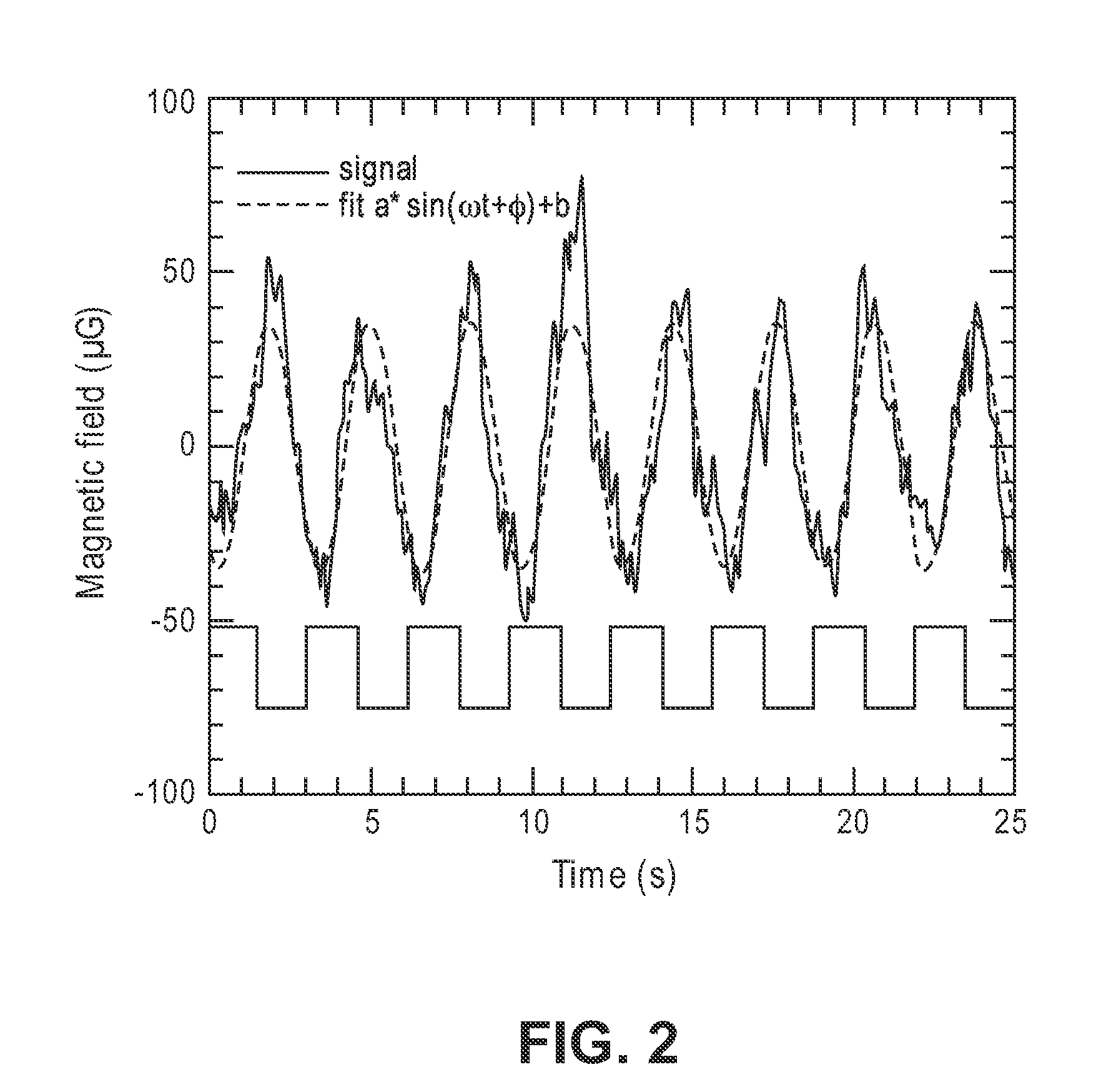Detection of magnetic resonance signals using a magnetoresistive sensor
- Summary
- Abstract
- Description
- Claims
- Application Information
AI Technical Summary
Benefits of technology
Problems solved by technology
Method used
Image
Examples
Embodiment Construction
[0018]The methods and apparatus of this invention use solid-state magnetoresistive sensors to detect changes in the magnetic field of a material after is has been magnetized. By using such solid-state detectors, one can obtain accurate fluidic measurements for very small amounts of fluids in the micro sample (nanoliter) range without contamination of the sample. In this context it has been found that the use of magnetoresistive sensors, including both anisotropic magnetoresistive (AMR) sensors, especially those that rely upon the giant magnetoresistive (GMR) effect, and magnetic tunnel junction (MTJ) sensors, though compact and relatively cheap, have sufficient sensitivity to be useful in the detection of small changes in the magnetic field of these small samples.
[0019]As used herein, the term magnetoresistance is the property of a material to change the value of its electrical resistance in the presence of an external magnetic field. The term anisotropic magnetoresistance (AMR) is ...
PUM
 Login to View More
Login to View More Abstract
Description
Claims
Application Information
 Login to View More
Login to View More - R&D
- Intellectual Property
- Life Sciences
- Materials
- Tech Scout
- Unparalleled Data Quality
- Higher Quality Content
- 60% Fewer Hallucinations
Browse by: Latest US Patents, China's latest patents, Technical Efficacy Thesaurus, Application Domain, Technology Topic, Popular Technical Reports.
© 2025 PatSnap. All rights reserved.Legal|Privacy policy|Modern Slavery Act Transparency Statement|Sitemap|About US| Contact US: help@patsnap.com



